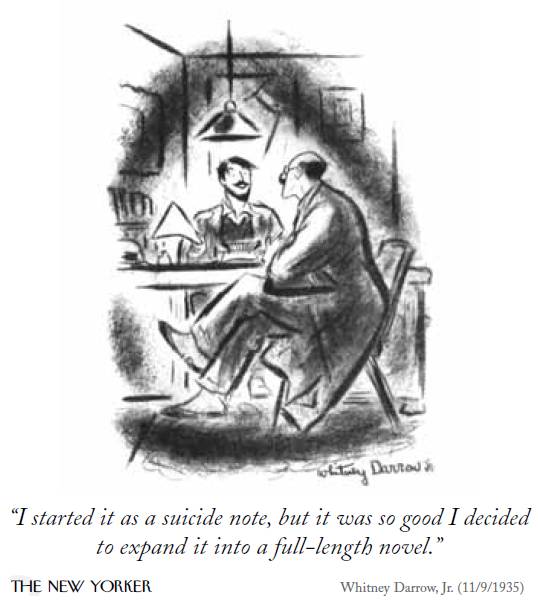Death is one of the great themes of existence that interests almost everyone but about which many people avoid discussion. It is also discussed in my essay to my children: The Meaning of Life on this website; written more than ten years ago; where I touch on personal issues not included below; such as risk taking and the option of suicide.
Religion and Death
In the past few years we have travelled to many places in the world where many religions and versions of the same religion are practiced.
The adherents to each of mankind's many religious sects universally believe that they have access to special knowledge that is not possessed by non-believers.
They believe this because the people they trust have told them so. They trust these people because they were brought up to do so by their childhood carers; or very occasionally because they have turned away from the previously trusted people and beliefs; as a result of some realisation of falsehood; or epiphany. In turn they share their special knowledge with their children and their community; and sometimes attempt to enlighten the wider world.
Most, or all, religions deal with mankind's special place in the world; where we came from; how we should live; and where we are going.
In addition to providing positive instruction in living most proscribe certain modes of behaviour like: bearing false witness; or acknowledging other gods. Immediate social sanctions may apply to malefactors and waverers such as: social exclusion; corporal; or even capital punishment. But falling victim to proscribed activities like: eating pork on Friday (venial sins); or disobedience to more fundamental laws; is usually claimed to influence or determine what will happen to individuals after their death. This is the ultimate sanction; and no sin can be hidden from an all-seeing God.
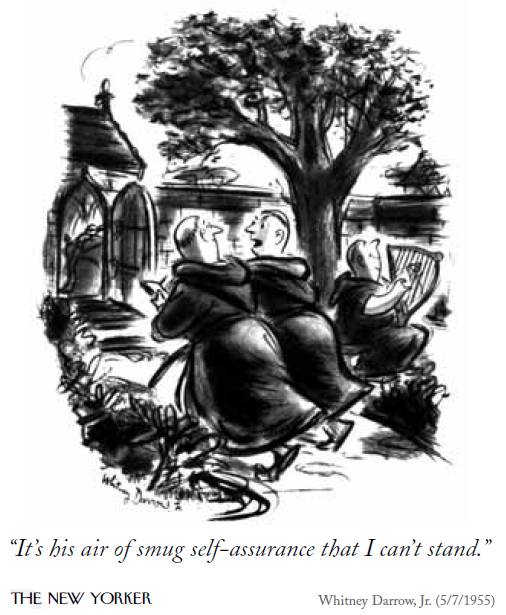
The mind-body divide is a widely debated issue in philosophy and medicine, as well as in theology, and is discussed in several other places on this website. But it is clear that for a religion to hold sway, in the face of defiance to its rules, it needs to posit a separate soul; that goes on in some way after the physical body dies; and for this progress to be considerably more harmonious for believers and adherents than for those who defy it.
So any view that physical death is final, with nothing to follow, will inevitably have less hold over adherents than one that posits posthumous rewards and punishments. Thus this position has always been overwhelmed by theologies that opt for an everlasting soul; either eternal or reincarnated and ever-cycling; in improving or worsening circumstances.
You may regard my interest in the treatment of death in religion as odd given other articles I have published on this website. But death is at the heart of religious debate and therefore one of the cornerstones of intellectual development over the past three millennia. What happens when you die was fundamental to the Jewish-Christian rift in the first century and 1450 years later the Roman Catholic-Protestant rift; for different reasons.
Without these debates we would not have modern science or the modern world now.
The Biblical view of Death
You might be surprised to learn that not all Jews believe in a life after death. Indeed the Old Testament Bible on your bookshelf, assuming you own a Bible, is deeply ambiguous on this matter.
Have a look at:
Psalms 115:17 'The dead praise not the Lord, neither any that go down into silence.'Psalms 146:4 When a man dies... 'in that very day his thoughts perish.'Ecclesiastes 9:5 'The dead know not anything.'Ecclesiastes 9:10 'There is no work... nor knowledge, nor wisdom, in the grave.'
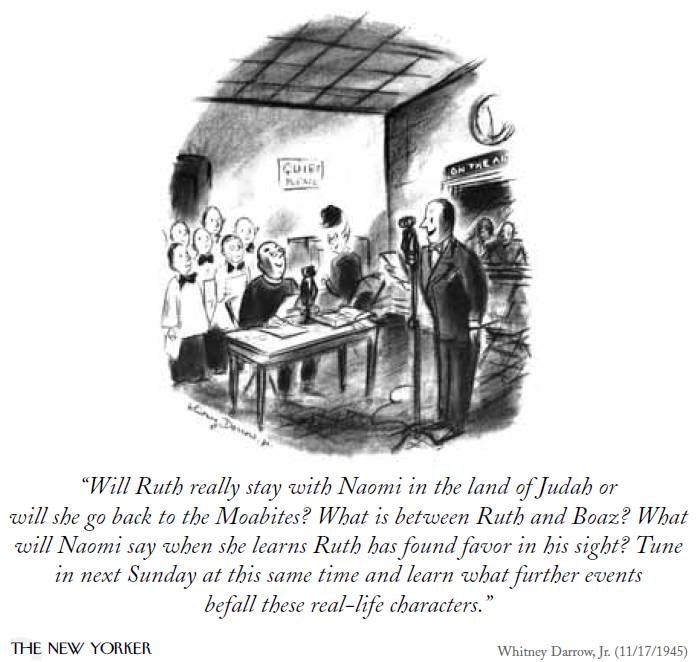
The authorship of Ecclesiastes is sometimes attributed to Solomon but unless it was rewritten this does not accord with the syntax or grammar of his time. It is probable that it was written around 200 years before Jesus and John the Baptist. The main message of Qoheleth, the Preacher in Ecclesiastes, is that all the actions of man are 'vain', 'futile', 'empty', 'meaningless', 'temporary', 'transitory', 'fleeting,' or 'mere breath,' and the lives of both wise and foolish men end in dust and nothing else. There is no eternity. One should enjoy and make the most of the life we are given by God; for there is no other.
The historical Jesus, like John the Baptist, and many other Jews disagreed. They held the view that the dead could and would be be resurrected. And this is the prevailing view within Judaism today. But resurrection requires that the essence of a person is somehow preserved after death; so that the mind or the 'soul' can be reunited with the body at the time of resurrection. Thus Jesus was amongst those Jewish preachers who taught the doctrine of resurrection:
Matthew 22:23, 29 Jesus rebuked those who said there was 'no resurrection.'Matthew 22:31 Jesus taught 'the resurrection of the dead.'Luke 14:14 The saints will 'be recompensed at the resurrection of the just.'The Jewish religion welcomes internal informed debate. Jesus, his followers and those of John the Baptist were Jews and addressed him as Rabi. Although this appears to be 'news' to some Christians no biblical scholar disputes this and there are numerous references to it in the Bible. After his death his followers, who held him to be the Messiah, became known as Nazarenes, a Jewish sect that continued to worship in the synagogue with other Jews.
The Messiah
The idea of mashiach (the messiah) is an ancient one in Judaism but it is not in the Torah (the first five books of the Bible). The Jewish idea of mashiach is of a great human leader who will be anointed king in the 'End of Days'; this is prophesied in the Torah. The king will accomplish these tasks: in-gather the exiles; restore religious courts of justice; end wickedness, sin and heresy; reward righteousness; rebuild Jerusalem; restore the line of King David; and restore the functions of the Temple.
The Rift
Most scholars agree that the separation of Christianity from Judaism was a process, not an event. The claim that Jesus had been the Messiah; had been resurrected and would return to complete the messianic tasks; and that in evidence he had already restored the Temple; set the Nazarenes apart; but was within the tolerable limits. Thus the Synoptic Gospels are at pains to trace Joseph's ancestry back to David, implicitly acknowledging his paternity of Jesus (Mathew 1:2-17 repeated in Luke).
But within a century of his death the Nazarenes claimed that Jesus was the son of God, rather than a son of God, his mother being a virgin; that the dead could be resurrected in his name; and, after Paul, that Gentiles could become Christians. This was a step too far for many traditional Jews. Between 85 and 90 CE Nazarenes were excluded from most synagogues for heresy; a rift reinforced at the Council of Yavne (Jamnia 90CE) and the Bar Kokhba revolt of 132–135CE. But isolated Christian-Jewish synagogues conforming to Jewish law are reliably reported well into the fourth century.
And so a new and independent Christian religion slowly developed as a kind of 'reduced instruction set' (RISC) version of traditional Judaism. Judaism for Gentiles. In support of the new faith the Synoptic Gospels were elaborated and several new books were written, particularly by Paul and the author of John. The old Testament law had been endorsed by Jesus on several occasions and obviously needed to be retained at least in those areas specifically mentioned; but now it had interpretive caveats; overruling or modifying many of its less Gentile-friendly laws and practices.
These texts were later culled and refined by Constantine at the Council of Nicaea in 325CE to become the modern New Testament; regularising Christianity as the new religion of the Roman Empire.
Roman Christianity was now fully distinct from Judaism and with this new Imperial endorsement; ostracism and vilification of traditional Jews soon began from this new position of strength.
A central message of the New Testament is that eternal life, once possessed by Adam and Eve but lost to mankind as a result of original sin, is available through Christ; and the Resurrection of the dead.
The Death of Christ
While many other religions hold to the belief that humans, and sometimes animals but usually not plants, continue to function as a disembodied 'soul' after death, in the case of Christianity this is made even more mysterious by the simultaneous belief that Christ died for the sins of mankind and that He is simultaneously part of a Trinity that constitutes the supreme God of the Universe: the creator of all things; all powerful; and all knowing.
If you were a naïve newcomer to Christianity you would immediately ask: If he was part of God when crucified surely he knew his fate and could have avoided it. Since he didn't he obviously planned or was complicit in his own crucifixion. The events that led up to it, Pilot washing his hands; Judas accepting a bribe; must have been preordained by him; or undertaken with his knowledge. Any pain his mortal body suffered was surely just part of the theatre; a fleeting and trivial discomfort for an eternal God.
But a Christian theologian may answer: In the Synoptic Gospels Jesus was still a man and doubted his relationship to God (why hast thou forsaken me); he had not yet risen to take his place in heaven; and thus was capable of real suffering.
You may then reply: But this interpretation is even more problematic. In this case the crucifixion was a temporally painful but ultimately beneficial process of metamorphoses. The crucifixion must still have been preordained by God the Father; together with all the events leading up to it. Also you have said that Jesus was capable of removing pain in others and did know Judas would betray him.
But more, you are telling me that your Trinitarian God was not complete until just over two thousand years ago. So God was incomplete for nearly fourteen billion years before this; including at least 70,000 years of pre-historic human existence? In any case this seems contradictory since God could obviously create a son, to sit on his right hand, any time he liked. As God always had this potential, deciding to become a Trinity sounds like a mere formality. And it seems to be a very recent whim; after billions of years.
And so on and so on... All these inconsistencies and doubts rehashed - over and over. But beware, Giordano Bruno was burnt alive in Rome just four long lifetimes ago (412 years) simply for publicly doubting the central role of man in the universe and doubting the Trinity. Being burnt alive is much nastier than crucifixion; and people still die today over much more subtle points of religious difference: transubstantiation of the host (Protestants and Roman Catholics); their relationship to Abraham; or the Succession to Muhammad (Sunni and Shia Islam).
As you travel around the world and admire the great cathedrals, and some beautiful local churches, upon which some of mankind's greatest architectural engineering and artistic resources have been lavished you might be surprised at how the many different interpretations of the scriptures have influenced the way Christ's suffering is depicted.
Elsewhere on this website I have mentioned the iconoclasm in the early Byzantine Church and again during the Protestant Reformation. Some protestant sects abhor any imagery; others tolerate decoration of the structure particularly the windows, but most display a plain cross in a prominent position.
In Roman Catholic, Eastern, Lutheran and some High Anglican churches, Crucifixes (the Body of Christ fixed to the cross) are displayed. But the form and demeanour of his representation varies widely.
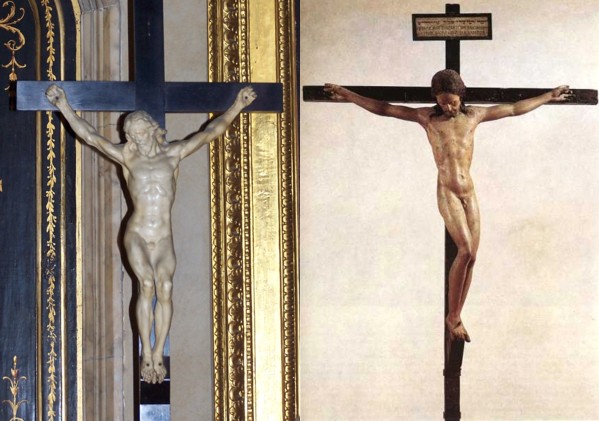 |
|
Often the crucifixes of choice is are the most interesting objects in a church; providing an insight to its focus and values. |
Spread of Christian Beliefs about Death
The roman Empire spread Christianity across Europe, initially from Constantinople. Constantinople was again supplanted by Rome as the Empire's capital but remained the centre of Byzantine Christianity until its fall to the Islamic Ottomans in 1543. Despite many setbacks, including the sacking and siege of Rome in the fourth and ninth centuries, the widespread practice of Christianity in other parts of Europe preserved the Roman Church; that then grew in strength through the Middle Ages.
One of these Medieval strengths was the innovative addition of the concept of Purgatory at the Second Council of Lyon (1274). Early Christians expected the second coming within a lifetime (as a literal reading of the Bible suggests) but as the millennium rolled by this deadline was 'pushed out' and started to look like 'the end of never'.
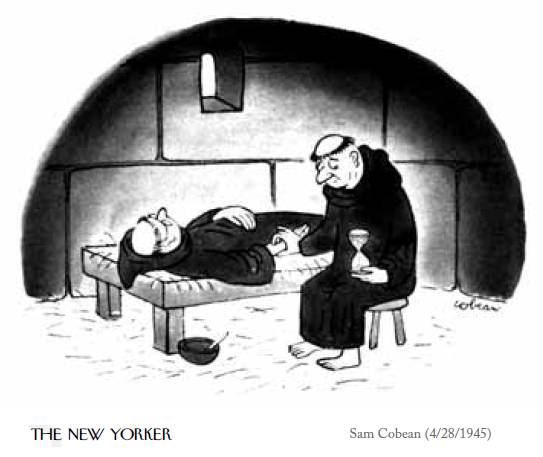
Purgatory was conceived as a place of cleansing, through torture or fire, through which one can ascend to heaven to await the second coming. It gave the faithful the prospect that they need not wait 'til the end of time (the second coming) for salvation, or for a chat with dead loved ones. It had the even greater benefit that pardons from the pain could be granted and indulgences for oneself or others, limiting one's time there, could be purchased; vastly improving Church finances; and the power it held over the secular princes of Europe.
But in this secular world new discoveries were being made and a fundamental change was on its way as a result of technological innovation. Around 1440 Johannes Gutenberg invented a relatively inexpensive printing process; and the Bible was first off the press. Soon every ecclesiastical scholar had a Bible to study. But despite returning to the original source documents in Greek and Hebrew to refine its accuracy as the true 'word of god', there was no purgatory mentioned anywhere there.
Instead they discovered that resurrection will not be realised until the occasion of the second coming; until then the Old Testament rules apply (nothingness):
John 5:28-29 'All who are in their graves' will be resurrected at the second coming of Christ.John 6:39, 40, 44, 54 All believers will rise 'on the last day.'Thus the Bible contradicts the doctrine that the dead are with God in Heaven; or in Purgatory. Instead, the dead who have been faithful, and forgiven their sins, will not meet again until 'the end of time'.
This discovery together with other inconsistencies in Church teaching and the Bible initiated the Protestant reformation.
Protestant Objections to Church Teachings on Death
Protestant Christians regard the Bible as the only true 'word of God'. Anything without Biblical authority, including around a thousand years of scholastic elaboration of the religion is treated as metaphor, ceremony or local colour (but without the force of scripture) at the Anglican High Church end of the protestant spectrum; or as outright heresy, occasioning burning in hell, at the more fundamentalist end.
These apparently esoteric differences between one Christian and another have been the cause of many thousands of violent deaths, murders and attempted murders since the Reformation; just one recent example being the 'troubles' in Ireland.
When she ascended to the throne of England in 1558, Elizabeth I sought to calm the civil strife that had broken out as a result of her late sister Mary's extreme attempts to put down the protestant reformation then sweeping over northern Europe.
During Mary's five year reign, she had over 280 leading Protestants charged with heresy and publicly burned at the stake. Many more were put to the sword.
Protestants and Catholic separatists, in the style of their father Henry VIII (defender of the Catholic Faith and a critic of the Protestants but more than prepared to seize Rome's assets), by then 'out-gunned' the traditional Catholics; who still owed allegiance to then highly politicised Church of Rome. In the ongoing civil unrest that resulted, many were being killed on both sides and commerce was being disrupted, weakening the nation.
It was, and is, a Protestant position that the 'Church of Christ' exists as a communion of Christians (faithful men); independent of its earthly organisation. Allegiance to Rome is not considered to be a matter of faith. The Church of England therefore claims its foundation to have been in 597; upon the first mission to England of St Augustine of Canterbury (although Christianity was first introduced to England through the Romans at least 300 years earlier).
There were calls for English independence from Rome's influence, and taxes, as early as the 14th century but the first full break with Rome was not achieved until 1536; under Henry VIII, as a result of a dispute over a divorce and his decision to tax Rome's assets in compensation. This break was briefly reversed under Mary.
Elizabeth re-established and formalised the independent Church of England.
Theologically Elizabeth had a foot in both camps, Catholic and reformist, or very likely with other Elizabethan intellectuals in neither; but politically she was aligned to the Protestants.
I recently watched Royal National Theatre production of King Lear on television. I have also seen it several times in the theatre; once memorably, with Judy Davis paying both Cordelia and the Fool. But on this occasion I was struck that in this apparently contemporary Elizabethan play tale no one believes in the Christian God. They repeatedly refer to 'the Gods': 'As flies to wanton boys are we to th' gods, They kill us for their sport'. And at one point an appeal is made to Juno.
Indeed scholars have remarked that Shakespeare's characters believe in all sorts of things, and fairies, ghosts and witches populate his plays, but he is careful never to declare the author's bias. His audience is similarly invited to suspend their metaphysical beliefs for the duration of the play; thus Julius Caesar; Anthony and Cleopatra; Coriolanus and so on are governed by the pre-Christian gods.
Protestant differences with Roman teaching are still preserved in the Anglican Articles of Religion (assented to by Elizabeth in 1562 as the foundation of the independent Church of England).
Compared to some more strident objections across the Channel these amounted to a relatively mild rebuke to Rome and an attempt at compromise with her Roman Catholic subjects.
Some excerpts from the Articles:
Article XIX
The visible Church of Christ is a congregation of faithful men, in the which the pure Word of God is preached, and the Sacraments be duly ministered according to Christ’s ordinance in all those things that of necessity are requisite to the same. As the Church of Jerusalem, Alexandria, and Antioch have erred: so also the Church of Rome hath erred, not only in their living and manner of Ceremonies, but also in matters of Faith.It should be said here that several of the objections set out in the 1562 articles; like the ceremonial use of languages (Latin) foreign to the congregation; and denial of the complete host to all the faithful; no longer apply since Vatican II. Others, like the prohibition on priests marrying, are very much softened by recent exemptions.
But several doctrinal objections remain. Among these are the claimed authority and infallibility of the Pope and:
Article XXII
The Romish Doctrine concerning Purgatory, Pardons, Worshipping, and Adoration as well of Images as of Reliques, and also invocation of Saints, is a fond thing vainly invented, and grounded upon no warranty of Scripture, but rather repugnant to the Word of God.Article XXV
There are two Sacraments ordained of Christ our Lord in the Gospel, that is to say, Baptism, and the Supper of the Lord. Those five commonly called Sacraments, that is to say, Confirmation, Penance, Orders, Matrimony, and extreme Unction, are not to be counted for Sacraments of the Gospel, being such as have grown partly of the corrupt following of the Apostles, partly are states of life allowed in the Scriptures; but yet have not like nature of Sacraments with Baptism, and the Lord’s Supper, for that they have not any visible sign or ceremony ordained of God.Article XXVIII
Transubstantiation (or the change of the substance of Bread and Wine) in the Supper of the Lord, cannot be proved by holy Writ; but is repugnant to the plain words of Scripture, overthroweth the nature of a Sacrament, and hath given occasion to many superstitions. The Body of Christ is given, taken, and eaten, in the Supper, only after an heavenly and spiritual manner. And the mean whereby the Body of Christ is received and eaten in the Supper is Faith. The Sacrament of the Lord’s Supper was not by Christ’s ordinance reserved, carried about, lifted up, or worshipped.
Needless to say this was not an end to the matter. Spain was at that time a super-power, that held the Pope within its political control, and King Phillip II was not about to take this lying down. An invasion was planned and launched.
But the Spanish Armada was destroyed, with huge loss of life, partly by the English defenders; but mainly by the weather. And so the new Church of England had been endorsed, not for the last time, by God himself.
Subsequent assassination and overthrow attempts against Elizabeth also failed due to divine protection; as did the later Roman Catholic attempted assignation of King James I in the gunpowder plot of 1605. This was discovered in a search ordered by the King himself who was claimed to be acting upon a divine inspiration; the unfortunate Guy (Guido) Fawkes being caught 'red handed'. Those plotters who escaped were subsequently engulfed in flames by the remainder of their gunpowder stock that they were attempting to dry in front of a fire.
If you are sceptical of God's role any of this, examine your own beliefs in the same light. We can all be induced to believe almost anything, particularly things learnt in childhood - we need to be wary of unsubstantiated beliefs handed to us by society or ancient texts.
The failure of Elizabeth's compromise to full satisfy the Puritans led in due course to the English Civil War 90 years later; more religiously initiated slaughter.
But in reaction to that came the Restoration and the English and Scottish Enlightenments; leading to our understanding that facts about the Universe are accessible to us without resort to supernatural explanations; and that they are not facts unless they are testable. This insight is behind the contemporary leap ahead in human knowledge, understanding and capability (like the means by which you are reading this).
Thus we learned that everything should be weighed against contemporary verifiable knowledge.
Most religious 'Truths' fail to satisfy these criteria.
Someone brought up on another planet might remark that all human religions put mankind in a privileged position in relation to the creator of the universe. Given our fleeting existence and the insignificance of our planet you might think, with Giordano Bruno, that this is improbable. You could interpret this to be evidence that humans are very good at story telling and self-aggrandising fantasy. You may observe that historically as these stories are repeated and retold they gain additional richness and begin to serve the interests of particular sections of society. Different versions of these tales get preserved in writing and some of these writings are elevated to the status of Truth.
Yet few of the claimed originators of these truths personally recorded them. Few, if any, prophets wrote the books of the Bible named for them; most were illiterate. Jesus did not write any of the Testaments; Muhammad did not write the Qur’an, although it is his words were transcribed poetically (he was illiterate) just as Ned Kelly did not write the Jerilderie letter (he too was illiterate but there were reliable witnesses to its dictation).
Religion is usually the construct of those ingenious men behind the scenes or who came later and elaborated: often poetically (Old Testament and the Koran are written to be sung or recited); typically with a motive, purpose and scope surpassing that of the initial inspiration; and frequently drawing on additional sources, authorities and other 'corroborative detail intended to lend an air of artistic verisimilitude to the narrative.
My Position
There is no evidence whatever that the thoughtful part of a person, let alone the activities of our brains that impart awareness, survives death. Death is after all defined as the failure of our brain to function any longer. If we are an organ donor, and are young enough for our organs to be useful, parts of us may go on in someone else but there is no passing on of our soul; even in the case of our live organs.
Of course our extended being lasts longer than our corporeal one. Creative projects often survive us: the music, or poetry, or books or software you wrote; your original discoveries; the things you made; the projects you planned; the people you influenced; the children you helped produce and raise; even the wars you fought. These are the essence of heritage. The work of many Elizabethan authors; craftsmen; painters and composers survived to this day.
Free will, if it exists (this is debated elsewhere on this website), implies that the things you might have done, but chose not to, are just as influential. Nurturing a future demagogue like Stalin or Hitler; or perhaps inadvertently stifling a future scientist; inventor; author, artist or artisan may mark your influence on the future as much as the things you undertook: in fact; or instead. Thus everyone of us leaves a posthumous mark on the future; sometimes unfavourable.
But this is not the same thing as having a spirit depart our body to go on with an independent existence. To me that seems patently ridiculous.
And contrary to the position sometimes stated by religious spokespersons today this is not an original position. Numerous prophets and philosophers have held that there is nothing after death. Christians and Jews both subscribe to the Old Testament Bible that clearly and unambiguously states this to be the case more than once.
I agree with the preacher in Ecclesiastes; one should make the most of the life you have been given while you are alive, because it's all there is; there ain't no more.
